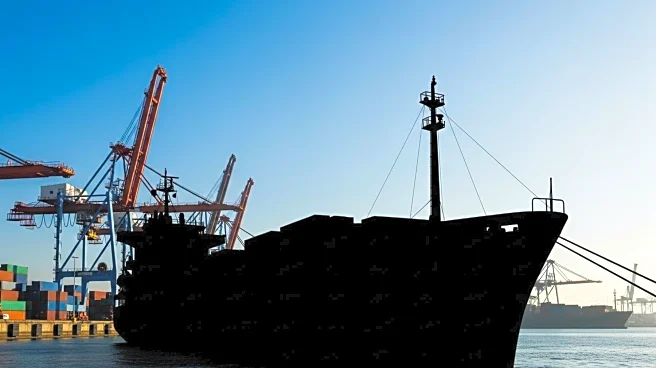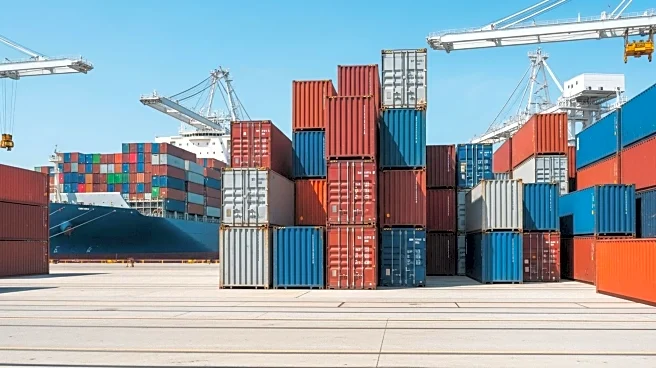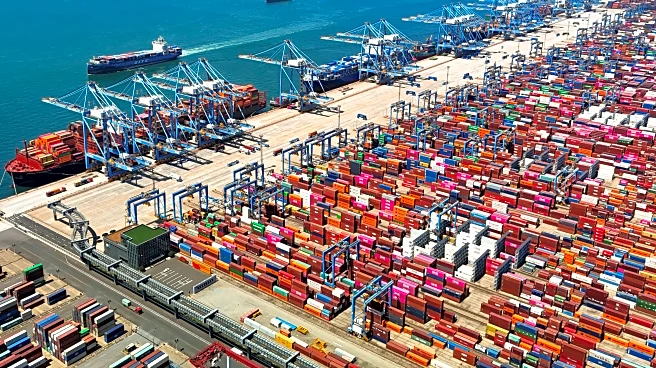What is the story about?
What's Happening?
The U.S. Trade Representative (USTR) has proposed modifications to the Section 301 fee program, impacting port fees for car carriers and equipment. The changes respond to public comments and aim to address concerns about fee structures. The proposal includes raising fees for car carriers from $14 to $46 per net ton, based on net tonnage rather than per unit carried. Additionally, tariffs on cargo handling equipment, such as cranes, may increase by up to 150%. The USTR is also considering exemptions for certain vessels and equipment, with some provisions set to expire in 2029.
Why It's Important?
These changes could significantly impact the shipping and automotive industries, particularly those relying on foreign-built vehicle carriers. The increased fees may lead to higher operational costs, affecting pricing and competitiveness. The proposal also aims to encourage reshoring of manufacturing for port equipment, which could benefit domestic industries but pose challenges for ports lacking alternatives. The reciprocal program announced by China could further complicate trade relations, potentially leading to increased costs and logistical challenges for U.S. companies.
What's Next?
The USTR has opened a new comment period for the proposed changes, running through November 12. Stakeholders, including shipping companies and port operators, are likely to provide feedback and seek clarifications. The USTR will review these comments before finalizing the fee structures. The reciprocal program by China, set to launch next week, may prompt further negotiations or adjustments in U.S. trade policies. Legal challenges could arise, particularly regarding the scope and fairness of the fees.
Beyond the Headlines
The proposed changes highlight ongoing tensions in U.S.-China trade relations and the broader implications for global shipping practices. The focus on reshoring manufacturing reflects a strategic shift towards reducing dependency on foreign suppliers, which could have long-term economic and geopolitical consequences.
AI Generated Content
Do you find this article useful?














